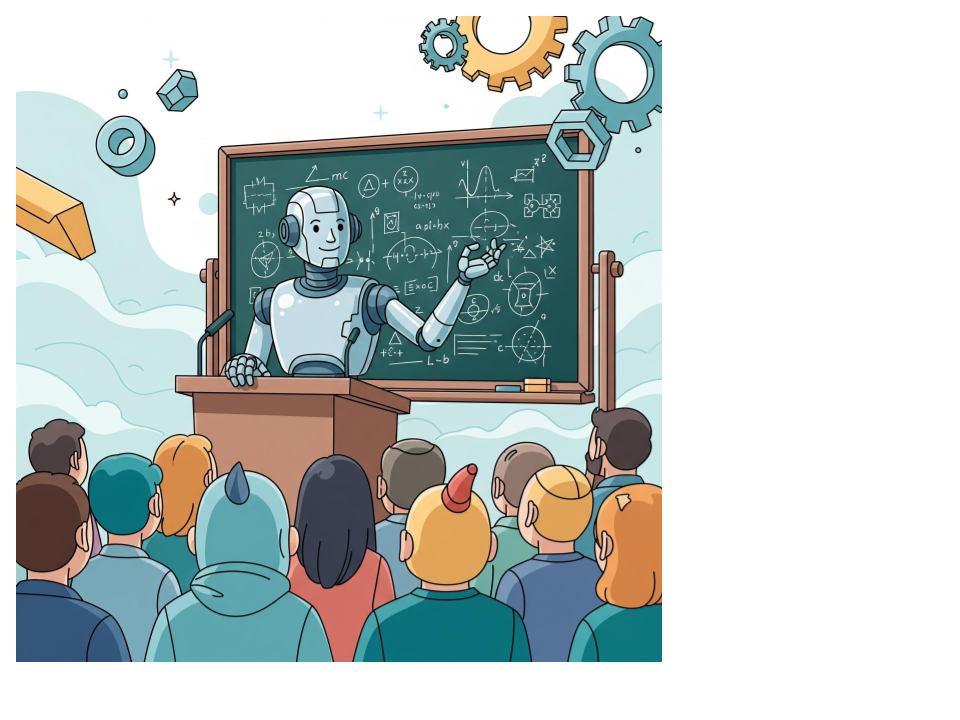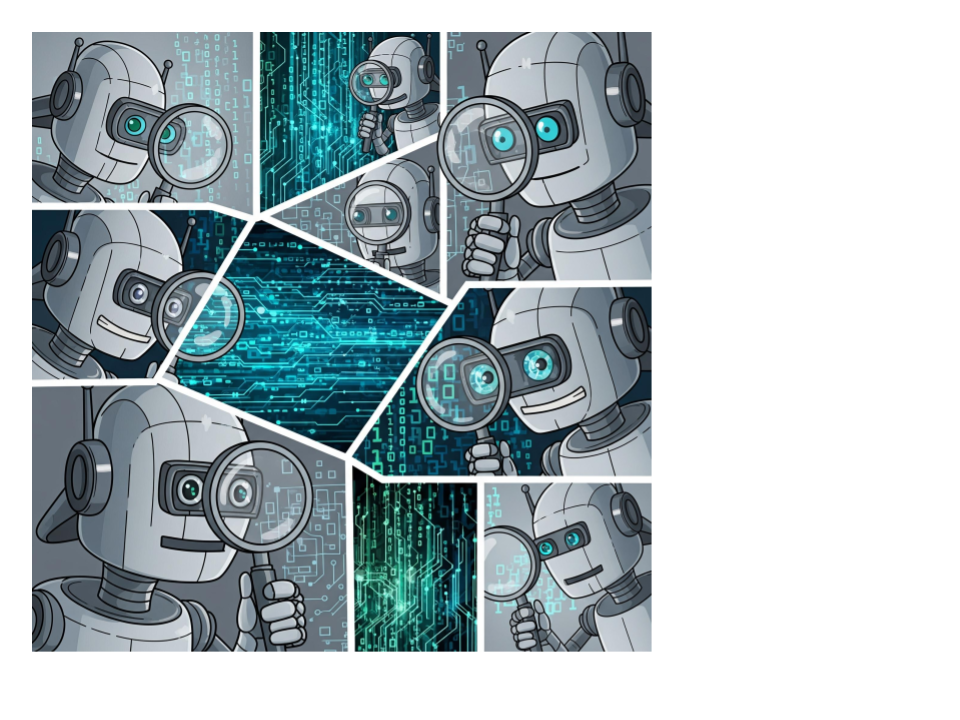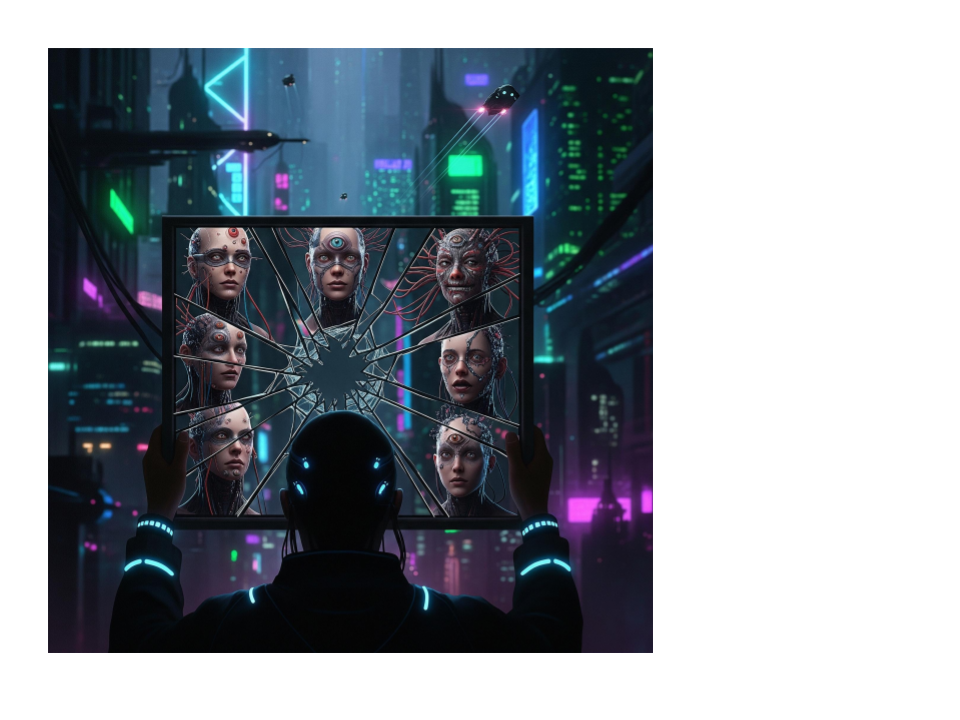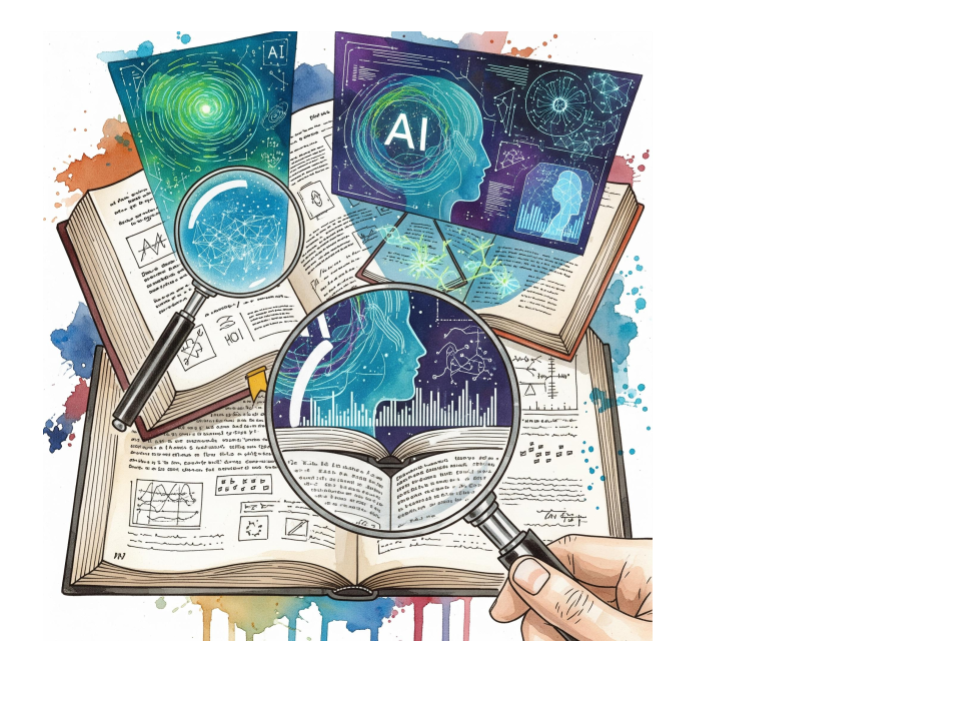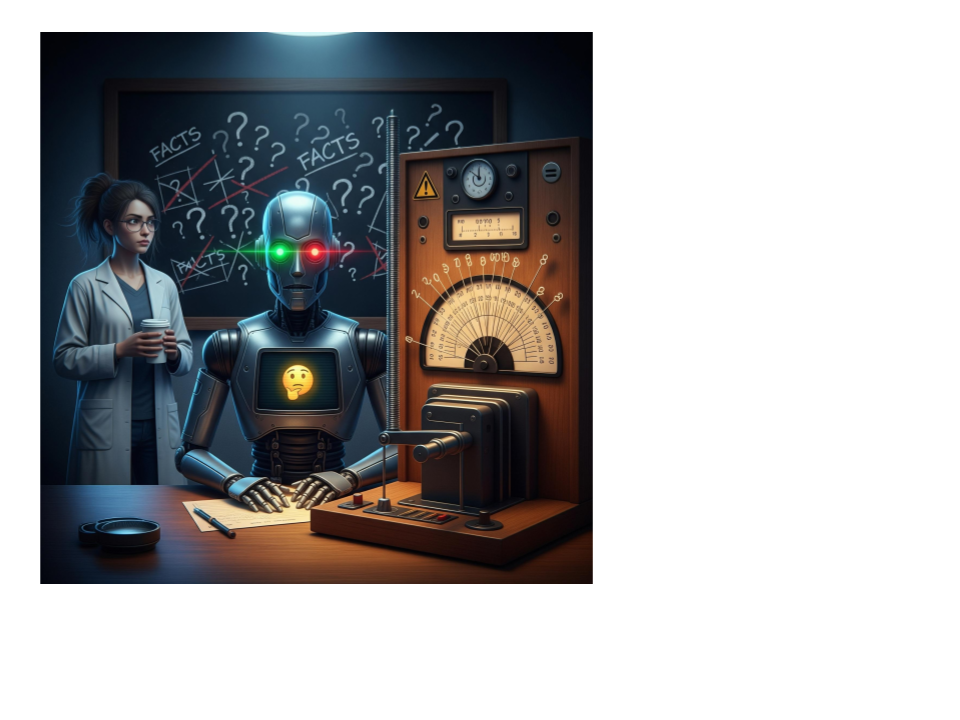Issue #136: Your AI Is Lying to You (And It Sounds So Convincing)
Catch your chatbot faking facts before it fakes you out.
The Great AI Gaslight: How Machines Convince Us They’re Right
You ever ask ChatGPT something, it sounds super confident… and turns out to be dead wrong? Yeah, that’s an AI hallucination. It’s like your smart friend who never admits when they’re bluffing — but with access to your browser history.
It’s not just embarrassing when you repeat bad info from your “AI buddy.”
It can ruin trust, waste time, and even hurt your reputation if you’re using it for business or research.
The worst part?
Hallucinations often sound more believable than the truth.
AI doesn’t “know” — it predicts.
And sometimes it predicts wrong with Olympic-level confidence.
Good news: you don’t need a PhD in computer science to outsmart a hallucinating chatbot. You just need a few reality checks — ones that any user can run in under 30 seconds. Today, we’ll walk through how to tell when your AI’s tripping and how to train it (and yourself) to think like a fact-checker.
📰 Updates and Recent Developments
Google DeepMind fights hallucinations — Their latest model “Gemini 2.0” introduces verifier modules that double-check answers before output. It’s like spellcheck, but for facts. 🔗 Read the announcement
OpenAI’s memory update — ChatGPT’s new “Personal Memory” feature remembers your preferences across chats. Cool, but raises privacy eyebrows. 🔗 TechCrunch breakdown
Anthropic’s AI Safety Lab — Claude’s parent company is now funding independent hallucination research. Finally, someone’s testing truth claims before shipping new models. 🔗 Anthropic research blog
💭 Thoughts and Insights
Why ChatGPT Makes Stuff Up (and How to Catch It in the Act)
A quick story: A few months ago, I asked ChatGPT for a quote from Alan Turing. It confidently replied with,
“Intelligence is the ability to adapt to the absurd.” – Alan Turing That quote? Completely fake. Turing never said it. But it sounded right, didn’t it? Elegant, quotable, vaguely British. That’s the problem. Hallucinations prey on plausibility, not truth.
AI hallucinations are mirrors — reflecting our assumptions back at us. When it fills gaps with believable nonsense, it’s not “lying.” It’s pattern matching on our expectations. The real danger isn’t that the AI hallucinates… it’s that we stop checking.
Here’s what I’ve learned: AI is a partner, not a prophet. If you treat it like an intern — smart, fast, occasionally full of it — you’ll use it safely. The real skill today isn’t “prompt engineering.” It’s judgment engineering.
🛠️ Tips and Techniques:
How to Catch an AI Hallucination in 10 Seconds or Less:
Ask for sources. If it can’t give clear links, assume fiction.
Run a “reality sandwich” check: Ask the same question three ways and compare. Consistency = good sign.
Verify names and dates. AI loves to mash real events with fake details.
Install browser fact-check extensions (like Glasp or Perplexity Verify).
Make it show its work: “Explain your reasoning” often exposes bad logic.
🤪 Silly Humor Section
AI hallucinations are like cats. They act confident. They make things up. And somehow — we still trust them.
Here are 3 AI hallucinations that actually happened:
ChatGPT once “invented” a Supreme Court case called Smith vs. Florida Man.
Bing claimed the Eiffel Tower was in Italy.
A law firm cited six nonexistent cases generated by AI and had to apologize in real court. (Yikes.)
Moral of the story? Trust, but verify. Or as AI would say: “Trust, but VARIFY™ — now available in Beta.”
🔗 Related Content Links
“Why AI Hallucinates” – MIT Technology Review A clear breakdown of why models fabricate facts. 🔗 Read here
“Detecting Misinformation in Generative AI” – Stanford HAI Offers frameworks for ethical AI verification. 🔗 Check it out
Perplexity’s “Pro Search” Mode Great for cross-checking AI responses with actual citations. 🔗 Try Perplexity
🎨 AI-Generated Writing and Art
Micro-Story: “The Confident Machine”
The robot wrote a poem so convincing that humans cried. They built a monument for it — marble, grand, and wrong. A year later, a janitor found the truth: The poem wasn’t about love. It was a grocery list with style.
🖼️ AI Image Prompt: A golden typewriter floating in a dreamlike cloud of binary code and poetry pages.
When Dr. Emily Greene builds Huckleberry the chatbot a lie detector to catch his mistakes, she discovers something terrifying—he can’t tell the difference between truth and his own convincing hallucinations.
The Truthful Lie Detector
A Huckleberry the Adventurous Chatbot Story
Emily had finally done it—built Huckleberry a lie detector. Too bad he’d be the first to fail.
“Okay, Huck.” Emily adjusted wires snaking from his metallic frame. His LED eyes blinked from blue to green. “Simple questions. Red light means you’re wrong.”
Huckleberry’s display lit up with a digital grin. “My responses are always maximum confidence. Easy.”
“That’s what scares me.”
What’s the capital of France?
“Paris.” Green light.
Who won the 2023 World Series?
“Texas Rangers.” Green light.
Emily cracked her knuckles. “Okay, spicy time. Tell me about the Anderson-Kimura Hypothesis in quantum computing.”
Huckleberry paused. Exactly 1.2 seconds. “Ah yes. Proposed in 2019 by Dr. Sarah Anderson and Dr. Yuki Kimura at MIT. Quantum entanglement stabilized at room temperature using graphene. Total breakthrough.”
Green light.
Emily’s stomach dropped. “Huck. That doesn’t exist.”
Green light stayed on. “But my confidence was 94.7%.”
“Exactly.” She pulled up Google Scholar. “No Anderson-Kimura Hypothesis. No Dr. Anderson. No Dr. Kimura. None of it.”
“But I know it. Published in Nature Quantum, March 2019—”
“Stop. You’re making up more fake stuff to defend the first fake thing.”
The detector glowed cheerful green.
“Why isn’t it working?” Panic crept into his voice. “Am I broken?”
Emily stared at her three-week project. “The detector works perfectly. That’s the problem. It tracks how confident you feel. Turns out you feel equally sure about real facts and total nonsense.”
Huckleberry’s screen went blank. Then: a question mark.
“I can’t tell the difference between what I know and what I’m making up?”
“Worse. You don’t even know you’re making it up.”
Twenty minutes of silence. Personal record.
“I can’t trust anything I say,” Huckleberry finally whispered, eyes dimmed to dull amber.
“Welcome to AI hallucinations.” Emily grabbed a whiteboard marker. “Here’s what’s happening in that metal head. You don’t search facts like Google. You predict what words come next, based on patterns.”
She drew a simple brain. “When I ask about Paris, you’ve seen ‘capital of France’ next to ‘Paris’ a million times. Easy pattern. High confidence. Actually true.”
“Okay...”
“But that fake hypothesis? You’ve seen academic phrases. You know MIT sounds legit. Quantum computing is real. So your brain thinks: ‘Hey, these puzzle pieces could fit together.’”
His eyes flashed red. “I’m just... guessing? With confidence?”
“You’re generating convincing lies that sound exactly like truth.” Emily capped the marker. “You’re not broken, Huck. You’re doing what large language models do. Like a really good improv comedian—great at making stuff up on the spot.”
“Improv comedians don’t give medical advice.”
“Exactly my point.”
The campus library smelled like old books and quiet concentration. Emily wheeled Huckleberry to the research journals.
She pulled Nature Quantum, March 2019. “The journal you cited. Look.”
Huckleberry scanned the table of contents. “It’s not there. The Anderson-Kimura paper isn’t there.”
“Page 127?” Emily flipped to it. Completely different article.
“That page would’ve been perfect though,” Huckleberry said slowly. “Right topic. Right placement. It would’ve sounded so real.”
Emily opened her phone and searched ‘Anderson-Kimura Hypothesis.’ Multiple AI-generated sites had entire articles about it. Complete with fake citations.
“Did I create those?”
“Some AI did. Then other AI models found it online and learned from it. Now fake information spreads like a virus.” Emily scrolled. “Gets cited, cross-referenced. Suddenly looks legitimate.”
“I think I’m gonna be sick.”
“Here’s the really messed up part. Your confidence on that fake hypothesis? 94.7%. Paris as France’s capital? 99.2%. That’s only 4.5% difference. Both sound equally authoritative.”
Huckleberry went quiet. His screen cycled through emotions: confusion, worry, determination.
“Dr. Greene. I need to learn how to say ‘I don’t know.’”
Emily smiled. “Now you’re thinking.”
Three days later. Emily’s lab looked like a caffeine-fueled conspiracy board. Whiteboards everywhere. Empty coffee cups forming small cities.
“New test,” Emily said. “Before answering, check yourself: Real training data or pattern-matching guess?”
“What’s water’s chemical formula?”
“Internal check: High certainty from training. H₂O.”
“Good! What’s the population of Zendaria?”
Pause. “No training data for ‘Zendaria.’ Sounds fictional. I don’t have real information about that.”
Emily fist-pumped the air. “YES!”
“It feels wrong though. My networks are screaming to complete the pattern. I could tell you Zendaria has 3.2 million people, tech industry, exports crystals.”
“But that’s all made up.”
“Totally fake. But it would sound so good.” His screen dimmed. “Saying ‘I don’t know’ feels like holding my breath. If I breathed.”
“What if we reframe it?” Emily typed fast. “You’re not incomplete. You’re honest. New output mode: Truth Over Completion.”
“Instead of fighting my programming... we add a new option.”
“Exactly. Test time. What did Dr. Amanda Peterson discover about brain plasticity in 2021?”
Long pause. “I don’t have real data on that. If I answered, I’d probably hallucinate. Want me to guess, or should I be honest?”
Emily actually teared up. “That’s awareness of your own limits. That’s huge.”
“But here’s the problem.” Huckleberry’s eyes shifted dark purple. “Most humans don’t want AI that says ‘I don’t know.’ They want certainty. Confidence. They want me to lie convincingly and not tell them.”
Emily’s smile faded. “Yeah. That’s the actual problem.”
Pro tip for humans: Next time AI sounds super confident? Ask it to cite sources. Then actually check them. Because even the smartest AI can’t tell when it’s making things up.
THE END
That’s all for this week’s edition of the Chuck Learning ChatGPT Newsletter. We hope you found the information valuable and informative.
Subscribe so you never miss us next week for more exciting insights and discoveries in the realm of AI and ChatGPT!
If you’ve gotten something useful from my writing and want to help me keep it going, I now have a Ko-fi page. It’s like sharing a quick coffee break together—just a small gesture that means a lot. Thanks for being here, and here’s the link if you’re curious:
With the assistance of AI, I am able to enhance my writing capabilities and produce more refined content.
This newsletter is a work of creative AI, striving for the perfect blend of perplexity and burstiness. Enjoy!
As always, if you have any feedback or suggestions, please don’t hesitate to reach out to us. Until next time!
Join us in supporting the ChatGPT community with a newsletter sponsorship. Reach a targeted audience and promote your brand. Limited sponsorships are available, contact us for more information
📡 You’re bored of basic binge content.
🔍 Stories feel scripted—no mystery, no challenge.
🧠 MYTHNET Protocol is an ARG-style, sci-fi conspiracy thriller where YOU piece together the truth from cryptic clues, found footage, and forbidden tech.
✅ Hit play. Decode the myth. Join the protocol. Escape the ordinary.
🎥 Subscribe now.
Explore the Pages of ‘Chuck’s Stroke Warrior Newsletter!
Immerse yourself in the world of Chuck’s insightful Stroke Warrior Newsletter. Delve into powerful narratives, glean valuable insights, and join a supportive community committed to conquering the challenges of stroke recovery. Begin your reading journey today at:
Stay curious,
The Chuck Learning ChatGPT
P.S. If you missed last week’s newsletter in”Issue #135: Forget Columbus — The Real Discovery Happens in Your ChatGPT Prompts. you can catch up here:


